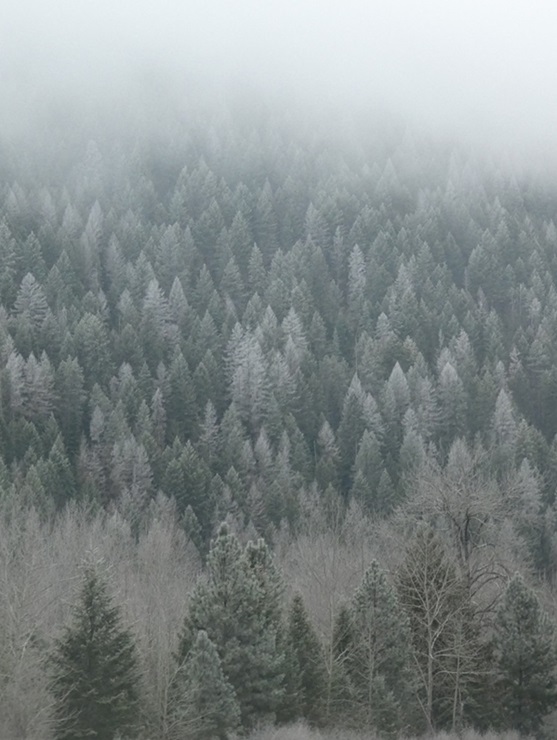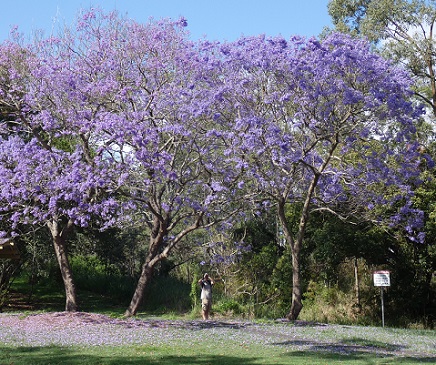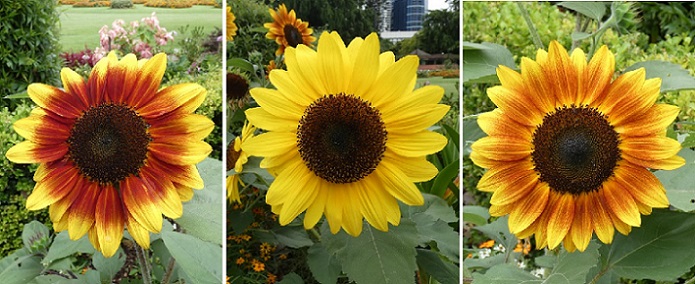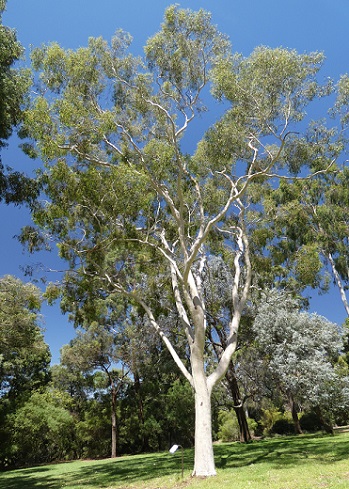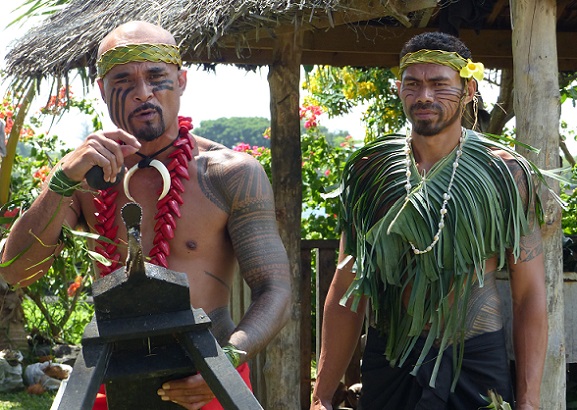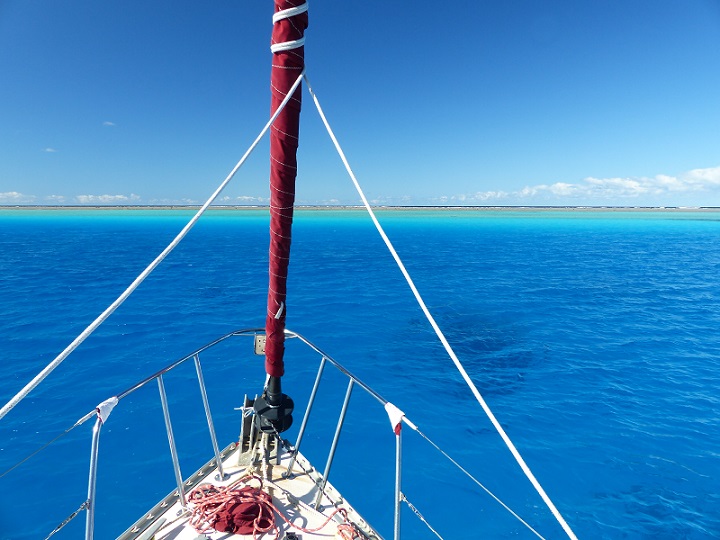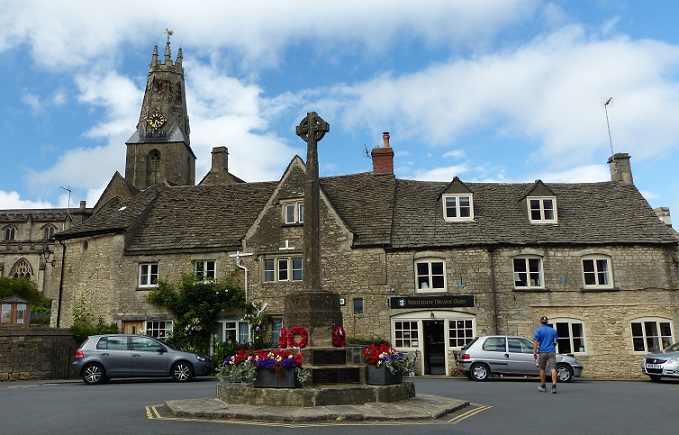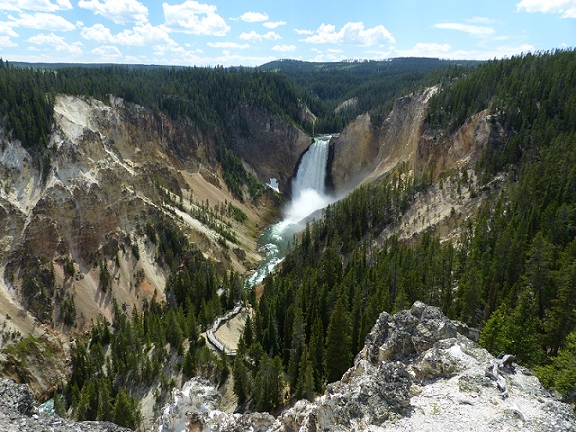
Tregoning
12 April 2024 | We are back aboard Tregoning in Mersin Marina, Mersin, Türkiye
02 April 2024 | We are in Toronto Airport, Canada: Tregoning is in Mersin Marina, Mersin, Türkiye
25 February 2024 | We are back in Gainesville, FL: Tregoning is in Mersin Marina, Mersin, Türkiye
18 February 2024 | We are in Glenwood, New Mexico: Tregoning is in Mersin Marina, Mersin, Türkiye
12 February 2024 | We are in Morro Bay, California: Tregoning is in Mersin Marina, Mersin, Türkiye
19 January 2024 | We are in Vancouver, BC Canada: Tregoning is in Mersin Marina, Mersin, Türkiye
01 January 2024 | We are in Washington State: Tregoning is in Mersin Marina, Mersin, Türkiye
15 December 2023 | We are in Minnesota: Tregoning is in Mersin Marina, Mersin, Türkiye
18 November 2023 | We are in Florida: Tregoning is in Mersin Marina, Mersin, Türkiye
29 October 2023 | We're in Florida - Tregoning is at B-dock, Mersin Marina, Mersin, Türkiye
21 October 2023 | 7 Oda Kapadokya Cave Hotel, Ürgüp, Türkiye
14 October 2023 | Hotel Aşikoğlu, Boğazkale, Türkiye
07 October 2023 | B-dock, Mersin Marina, Mersin, Türkiye
19 September 2023 | “Chez Jon & Angela”, Near Otterton, Devon, UK
14 September 2023 | Airbnb in Fortuneswell on the Isle of Portland, Dorset, UK
11 September 2023 | With Mike, Grange-over-Sands, Cumbria, UK
03 September 2023 | Ardington House, Ardington, Oxfordshire, UK
24 August 2023 | Near "Chez Joan and Peter", College of Roseisle, Moray, Scotland
11 August 2023 | Andrew's house (not exactly), Lichfield, UK
22 July 2023 | Chez Gail, near the New York Café, Budapest, Hungary
Showing Australians their wondrous wildlife
17 August 2021 | Malanda Manor Guesthouse, Malanda, QLD, Australia
Alison Stocker | Photo: Sue, Jamie, Graeme, Lynne, and Andrew: our merry crew of inland travelers
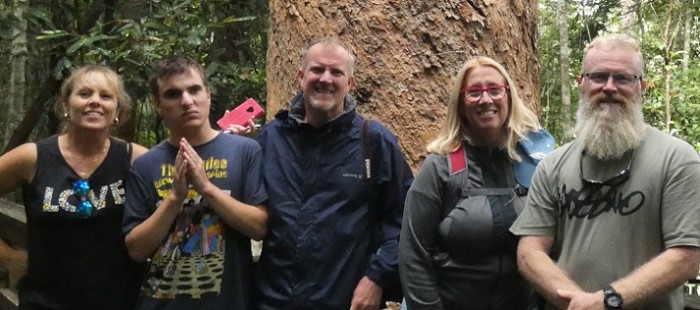
As Randall and I considered what we would like to do if we rented a car and went inland from Cairns for a few days, it soon became apparent how thorough we had been on our similar trip last year. That time, with just the two of us, we had very much focused on birding. However, we had also managed to see platypus and tree kangaroos and to visit several notable trees, lakes, and other sites of interest. Thus, it was now not very obvious where we would go to get a different experience.
Our quandary was solved for us once we had established that we would be going inland with our Australian friends from SVs Mischief and Symphony II. Long, slow birding walks might not be their highest priority, but the possibility of seeing cassowaries and tree kangaroos for the first time seemed to generate quite a buzz of excitement. Combined with the likelihood that recent heavy rains might have swollen local waterfalls to wet-season (summer) proportions, I soon found myself planning an itinerary that would revisit some sites from last year where we has seen unusual wildlife, and several places, particularly waterfalls, that we had missed. Once Lynne had booked us three rooms for three nights at a place near Malanda and we had reserved two cars, it felt as though we had very worthwhile trip outlined.
We moved Tregoning into the expensive Marlin Marina on Sunday (15th August) where I had the pleasure of completing five weeks' worth of laundry...woohoo! The following morning, we walked to the car rental office to be there at their 8 am opening time. This was fortunate because it took almost an hour to get both cars, by which time quite a queue of other, increasingly disgruntled, renters was forming. Bags packed for Lynne, Andrew, Randall, and me in one car, and Sue, Graeme, and Jamie in the other, we managed to leave the marina a little before our expected departure time of 10 am.
Our plans had the flexibility of heading south or north depending upon the weather conditions. The northerly option, on the ocean-side Cook Highway, would be best in sunny conditions and, although it was fairly bright as we left, the weather radar indicated that bands of rain clouds were on their way. So, hoping that conditions would be better for returning via the Cook Highway on Thursday, we headed south towards Babinda.
Our timing was going to be perfect. We could visit and bathe at the famous Babinda Boulders and then enjoy lunch at the highly regarded Babinda Bakery. Sadly, we had the right time, but the wrong day. As we drove through the small town on our way to the Babinda Boulders Scenic Reserve, we noticed a large sign at the Bakery noting that they were closed on Mondays. Such cruelty!
Fortunately, we still had time to recover with an alternative lunch plan after we had visited the Boulders. Located on the edge of Wooroonooran National Park, the Babinda Boulders Scenic Reserve is actually run by Cairns Regional Council and, even with the gathering clouds, it was quite a popular destination. Nobly volunteering to "take one for the team", I changed into my swimsuit, thinking that a quick dip in one of the deep pools worn into the granite substrate, as shown on the website's photos, would be fun. But first, we all followed the path through the dripping rainforest to the main viewpoint at Devil's Pool.

From the viewpoint at Devil's Pool, a corner of Babinda Creek where the water has carved several deep holes in the smoothly worn granite
Babinda Creek was certainly flowing with some gusto, spilling into deep pools that had been carved in the granite, racing through narrow channels between large boulders, and crashing across several cascades. There were many signs warning of the dangers of the Creek and banning entry to the water between the car park and Devil's Pool. Under these conditions, the reasons for such caution were obvious but the Aboriginal legend of how this area became so dangerous emphasizes that not everyone is cautious enough.
From Wikipedia:
"The tale is about Oolana, a young woman from the Yindinji Tribe. After being promised to a respected tribal elder, she met a handsome young warrior called Dyga from another tribe and fell in love. They fled their tribes and escaped into the wilderness to continue their affair. Elders searched for them and they were captured. Dyga was dragged away. Oolana escaped and was in despair. She threw herself into the Devil's Pools and her anguished cries turned into the pools' torrents.
Locals believe that Oolana's spirits still haunts the Devils Pools, pulling young men to their untimely deaths."
Once we had been impressed with the Devil's Pool, we returned towards the car park then continued upstream to the designated swimming area which is supposed to be very popular on hot days. Instead of the attractive deep pool of slow water that I had expected, the designated site was an area of shallow sand and much slower flow. On an overcast day with rain starting to fall, the greenish water did not look at all appealing, so I waded in to knee-depth and left it at that.
The heavy rain deterred us from going straight to Josephine Falls as we had intended, so we continued to Innisfail, planning to have lunch at the Cassowary Café, which Lynne had identified as looking very suitable for us. I am sure that it once was, but unless the directions on Google were completely wrong, that Café had not been in existence for a while. We finally ate a filling Thai meal at the Riverfront Café, and I started to wonder if anything on this trip was going to unfold as we had expected.
Innisfail is not very far north of Etty Bay Beach, where Randall and I had seen a cassowary last year. Randall had warned me against suggesting a trip there as it seemed unlikely that we would be so lucky again. Despite our words of caution, however, the rest of the group were still keen to try every opportunity to see a cassowary. Sure enough, there was no sight of one on the beach or around the campground. To add to our sense of frustration, someone told us that we must have just missed seeing one on the road, and Lynne and Sue found fresh footprints on the beach. The only redeeming aspect of this wasted detour seemed to be that the rain had stopped, so we started to make our way back to the main road and Josephine Falls.
After rounding a corner and slowing to cross a narrow bridge, the cry went up, "Cassowary!" And there on the other side of the road, walking daintily towards us, was a cassowary. Luckily, there was room to pull the cars over on the grass and everyone spilled out with cameras and phones at the ready. These Etty Bay cassowaries must be so used to tourists. This one continued walking, apparently quite undaunted by our sudden arrival, crossed the bridge and then turned to enter a pasture and head up the hill. By this time, another car coming in the other direction had joined our mob of paparazzi...and then the cassowary was gone. Thanking our good fortune for having been at the right place on the road at exactly the right time, I decided that perhaps not every one of the plans for our trip was doomed after all.
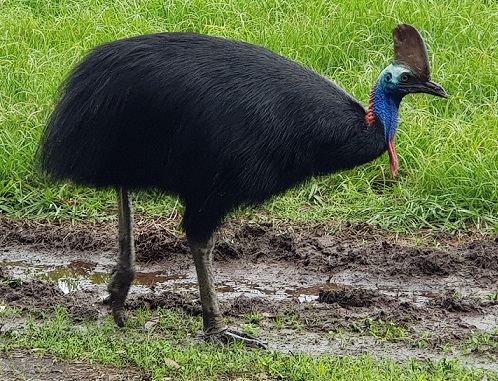
The roadside cassowary near Etty Bay (to 2m tall - this is Lynne's photo which was better than ours)
Thus encouraged and excitedly comparing our cassowary photographs, we returned through Innisfail to Josephine Falls in Wooroonooran National Park. It rained throughout our visit to the Falls, but after our good cassowary fortunes, our spirits were not dampened as we followed the trail to the Falls with our raincoats and umbrellas.
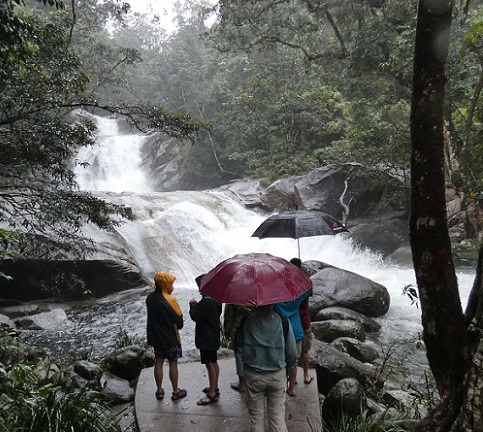
Our group admiring the triple tiers of Josephine Falls in the rain
Josephine Creek flows off Bartle Frere, Queensland's highest peak at 1,622 m (5,322 feet). Sadly, this peak was hidden from us all day in low clouds. As at Babinda Boulders, it was possible to swim in Josephine Creek in low-flow conditions. There were also many warnings about the dangers of leaving the trail and approaching too close to the Creek when water levels are high.
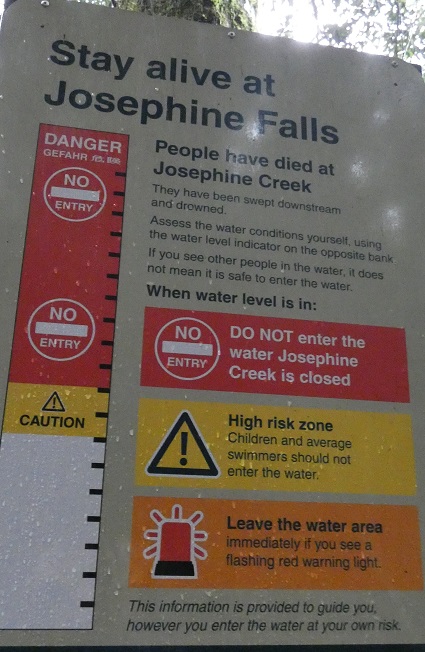
Warning signs at Josephine Falls explaining what the water-level indicators (left) mean
Only the top, red parts of the markers in the water were showing, which indicated that the water was at the "No Entry" level. If that was not clear enough, there were red lights flashing at every point at which a person might leave the path to enter the water. These lights indicated that no one should be on the creek edge, except on the designated pathway and viewing platforms. Our group did not need all of these warning to realize that the massive amount of water roaring over the multiple tiers of the cascades could rapidly increase during the rain, and would be completely overpowering to anyone swept into it.
We soon realized that such common sense is not evident to everyone as we watched a foolish young man pass the flashing lights and scramble his way onto a large boulder next to the rushing water. Apparently this idiot did not realize that he was supposed to be lured by Oolana's spirits into the Devil's Pool at Babinda Boulders, not into Josephine Falls. Most of us were relieved to see that he managed to return to the path without incident, but we all knew that one slip, a banged head, and he's gone...
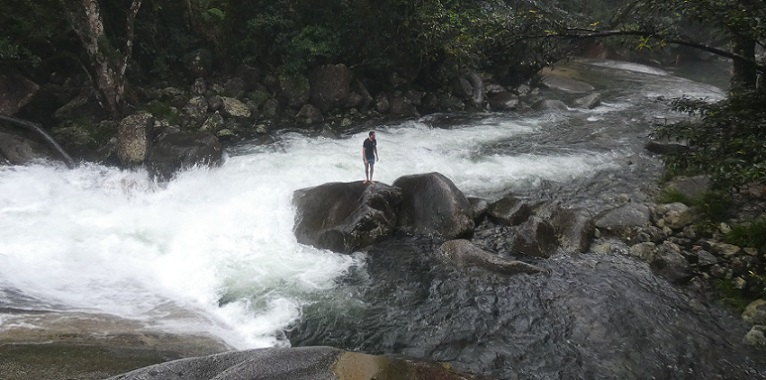
Ignoring the red warning lights, an idiot clambered out to stand on a boulder just below the main cascades of Josephine Falls
During our walk through the rainforest on the path to the Falls, we had to brush past some branches of a recently fallen tree. When we returned to our cars, several of us found that we had land leeches attached to our feet or ankles. Apparently this was not a new experience for any of us, but we had somewhat differing reactions to it. Randall and I calmly pulled off the offending creatures (about 2 cm or 1 inch long) and put sticking plasters over the tiny but profusely bleeding wounds.
Lynne and Sue provided a much more visceral expression of their disgust. This involved a certain amount of shrieking, wild flapping of hands, and instructions to their partners, growled through gritted teeth, to remove the #?@*ers. There seemed to be some confusion as to the best way to do this, with salt on the tail being a popular idea...if only we had some salt. This is an effective way to dry and kill isolated leeches but, if applied when they are still attached, apparently risks having them vomit into the wound, which is probably not helpful. Randall tried to be encouraging by pointing out that removing a little flesh with the leech was not a problem, but I think that this was somewhat confusing this situation with the removal of ticks, where you do not want to leave any mouthparts in the wound. Eventually, the leeches were all simply picked-off and thrown away, wounds were dressed, and nerves were calmed. I know that my laughter throughout this performance did not help the situation, but I had never seen Lynne lose her cool before!
Predictably, we had no view on the drive up the Palmerston Highway due to low clouds and rain. After a brief stop to buy breakfast items at the small supermarket in Millaa Millaa, we continued to the Malanda Manor Guesthouse on the Millaa Millaa-Malanda Road. Damp and rather exhausted by the leech incident, we were all ready to relax, and the place that Lynne had chosen was perfect. We had the three large rooms on the top floor, each with a bathroom and kitchenette. And when we had walked in, a fire was roaring in the fireplace of the comfortable lounge.
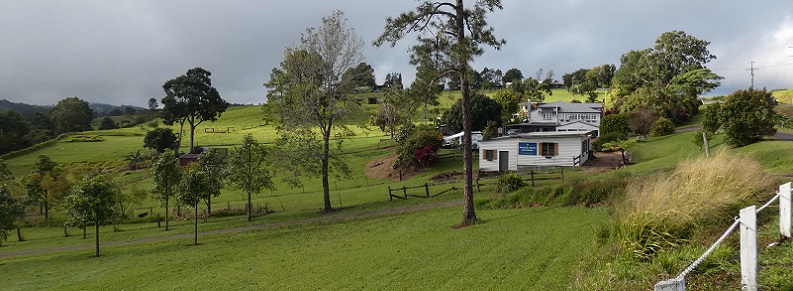
Malanda Manor Guesthouse overlooking attractive pastureland
Our host Lee was very friendly and helpful, and with his daughters, Chloe and Emily, they were all very patient and understanding of Jamie, with his sharp focus on their washing and dishwashing machines and fire alarm system. We only met our hostess very briefly, but she was an excellent cook and made us very glad that we had chosen to eat at the Manor that evening. There were two other guests that night, Nicola and Jess, who joined us for music and songs by the fire. When he borrowed Randall or Graeme's guitars, it did not take us long to work out that Jess had once been in a rock-and-roll band!
By the following morning, we were relieved to see that most of the clouds had dispersed. Randall and I went for an early stroll along some of the roads near the guesthouse. We completed a bird survey which included a forest kingfisher and a Macleay's honeyeater, the latter being a species that we had not seen since our stay in Jullaten last year.
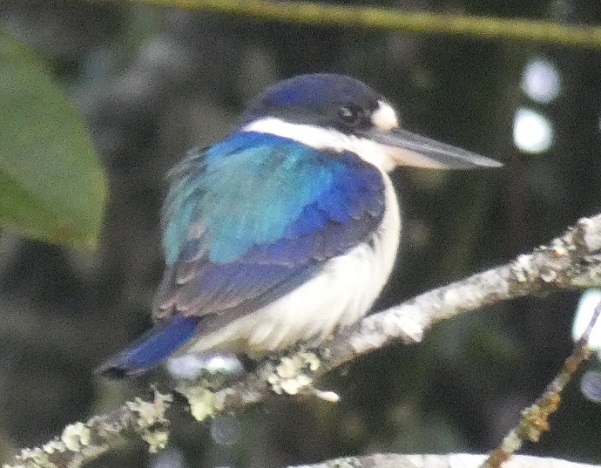
The varied shades of blue of a forest kingfisher (to 22 cm or 9 inches) seen near Malanda Manor
Having breakfasted in our rooms, we piled into the cars and drove north for all of 6 km (4 miles) to Malanda Falls. This delicate cascade did not seem very exciting after Josephine Falls and the Babinda Boulders and no one was in the mood to swim in the large pool.
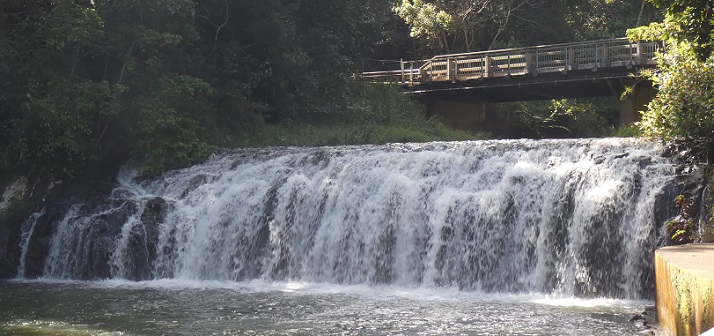
Malanda Falls
However, everyone seemed to find something of interest at the informative and well-hosted Visitor Center. Having recently come from Cairns, we had to wear masks inside the Center because it was still within 11 days of the end of the snap 3-day lockdown in the city. Amazingly, no cases were ever linked to the infected taxi-driver, so the residents of Cairns were extremely lucky. On leaving the Visitor Center, on our way to look for tree kangaroos along the Rainforest Walk, Graeme, Andrew, and Randall were surprisingly inspired to pose for pictures. Despite embarrassed pleading, Sue, Lynne, Jamie, and I, did not feel the need to "take our turn".
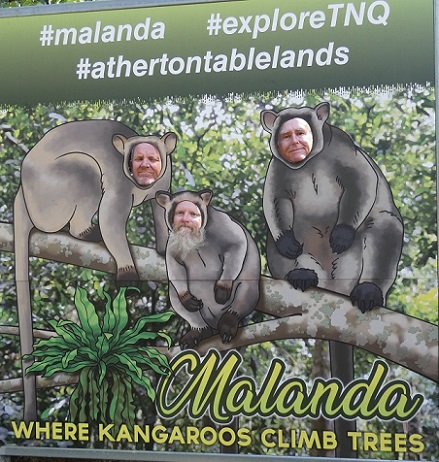
L to R: Graeme, Andrew, and Randall posing as tree kangaroos
We lingered for quite a while on the 1 km loop trail, particularly looking for the Lumholtz's tree kangaroos. There are at least 13 species of tree kangaroo but most of them occur in New Guinea. The only other species in Australia is the Bennett's tree kangaroo, which is about twice the size of the Lumholtz's, and which is limited to a small area of the Daintree Rainforest south of Cooktown.
At the Turtle Viewing Platform, we were enchanted to see at least 20 saw-shelled turtles of various sizes resting on a partly submerged log or swimming in the murky water. Everyone was suitably surprised to learn that these turtles can breathe by exchanging water through their cloaca in a gill-like manner. Although they still have to surface occasionally to refill their lungs, this "breathing through their bottom" allows them to stay submerged for much longer than most other turtles.
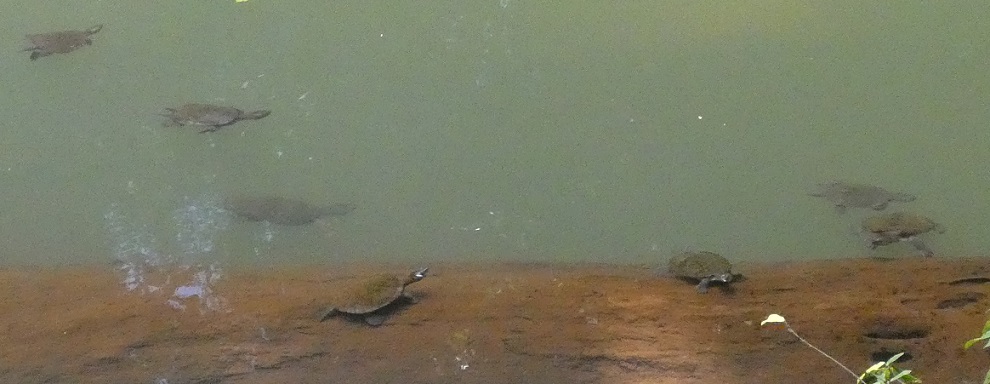
Some of the many saw-shelled turtles seen in the North Johnstone River from the Turtle Viewing Platform
To the delight of Randall and me, we not only heard, but also saw, black-eared catbirds and several eastern whipbirds. The others were familiar with the call of the latter species but had never seen one, and they had never heard of catbirds before. Even more excitement followed the sighting of a small jumparoo on the ground in a patch of sunlight. We were soon snapping photographs and appreciating our good fortune at seeing a tree kangaroo so easily. Gradually, however, we all agreed that it was spending too much time on the ground to be a Lumholtz's tree kangaroo, and lacked the characteristic enlarged forearms, dark face, and dark paws.
By the time we finished the loop trail we had seen several of these jumparoos contentedly warming themselves in sunlit areas of the forest. Asking at the Visitor Center, we learned that they were red-legged padamelons. Randall and I have seen many padamelons (the next size of jumparoo down from wallabies) in Tasmania, but our Australian companions had never even heard of them, much less knowingly seen them before, so that made our sightings extremely satisfactory.
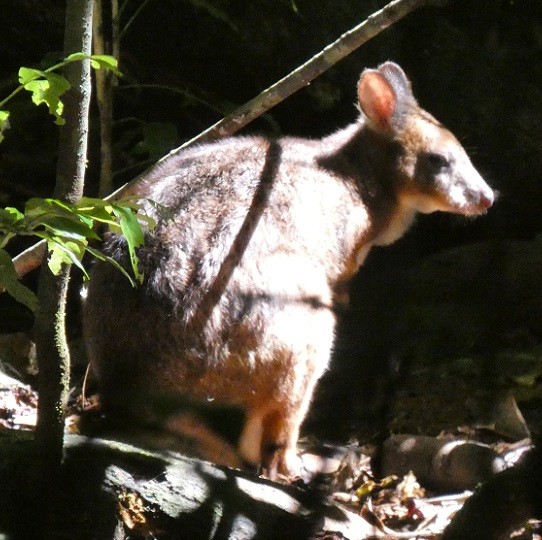
A red-legged pademelon (to 58 cm or 23 inches tall) warming itself in a patch of sunlight near the Rainforest Walk
Finishing our search for tree kangaroos around midday, we decided to stop at one of the volcanic lakes near Yungaburra to eat our picnic lunches. Since we had visited Lake Eacham last year, I suggested that we stop at Lake Barrine where we found more than a dozen great crested grebes in the middle of the lake. I had originally intended that we would have lunch or tea at the Lake Barrine Teahouse which receives excellent reviews, but I was disappointed to find that during this pandemic-influenced season, it was only open on Thursday through Sunday.
The only water input to both crater lakes is rainfall and Barrine only has any outflow during the wet season. Randall and I were a little surprised to see a sign informing us that the lake has an infestation of spotted tilapia fish. Native to West and Central Africa, this species is considered a noxious pest in Australia due to its ability to rapidly outcompete native fish and dominate aquatic communities. We were even more surprised to see several of these distinctive fish, each with a row of large spots along the side, despite repeated efforts to remove them by spearfishing. The round lake is only 1.2 km in diameter (0.8 mile) but with a depth of 65 m (213 feet), there is a huge volume of water in which the fish can lurk.
A short walk took us to the bases of two giant bull kauri trees (Agathis microstachya) both over 45 m tall (148 feet). Bull kauris are the largest of Australia's 38 conifer species and are restricted to a small area with high rainfall in the Atherton Tablelands, between 600 and 1,000 m elevation (2,000 to 3,280 feet). These specimens were thought to be about 1,000 years old, and ancient kauri species shared the planet with the dinosaurs.
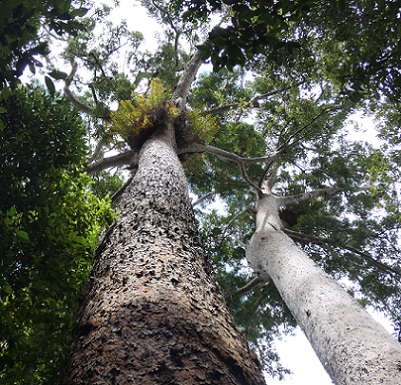
The tall pink-tinged trunks of the bull kauri trees at Lake Barrine
Continuing the tree theme, we drove east along the Gillies Highway until turning off to find the Cathedral Fig Tree. This huge strangler fig with a 72 m (236 feet) girth is probably about 500 years old. The canopy is estimated to be over 2,000 sq m (the size of two Olympic swimming pools) and the leaves alone might weigh 1,000 kg (2,200 lbs or the weight of a small car).
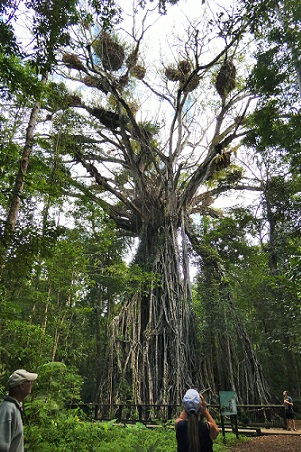
Randall and Sue admire the Cathedral Fig Tree with many clumps of ferns seen in the canopy
The term "strangler fig" applies to at least a dozen species of fig that share the strangling growth habit that helps them become established in dense forests. This particular tree is a green fig (Ficus virens) and is certainly an impressive size with an amazing density of roots. To be honest, though, I thought that the Curtain Fig Tree that we saw last year on the other side of Yungaburra was a bit more unusual and interesting.
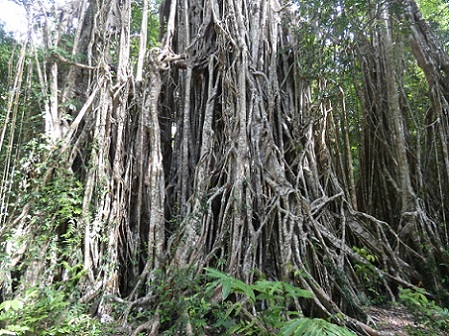
The dense monument of roots of the Cathedral Fig Tree
Returning to Yungaburra, we stopped at the Platypus Viewing Area where the Gillies Highway crosses Peterson Creek. Although all of us had seen a wild platypus before, their rarity and shyness made us all keen to see one again. Some of our group thought that they briefly saw a platypus below the viewing platform but what I though was one turned out to be the back end of a turtle. Most of us then walked up the Peterson Creek Trail while Graeme and Randall drove the cars to park near the Lloyds Suspension Bridge and walked back to meet us. Much to Sue's excitement, we did find a small platypus in the muddy water of one of the creek's bends. She managed to capture one good photograph but this creature was very shy, so it dived again almost immediately after it surfaced and saw one of us. I did not really get a good look but was happy that I saw one last year when we had visited much later in the day. While some of us wished that we could stay for longer to watch quietly, I thought that this little platypus would rather that we moved on. As it was, we did not have a choice because we had a date at the Nerada Tea Plantation.
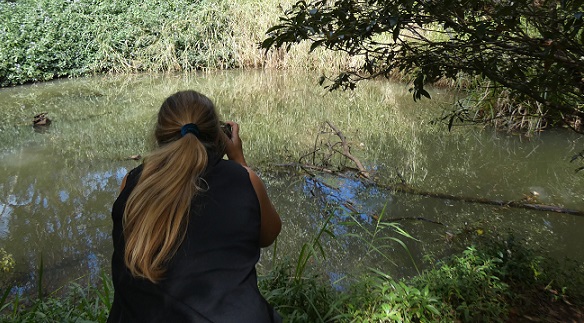
Sue taking a picture of the shy platypus that I didn't quite see in the Peterson Creek
Since our Australian companions were nearly all tea-drinkers, and Jamie was always keen for a milkshake, we had made a reservation to have a Devonshire cream tea with scones, jam, and cream (not, sadly, the clotted cream as found in Cornish Cream Teas) at the tea plantation at 3:30 pm. After placing our order, we looked for tree kangaroos in the trees outside the Visitor Center but to no avail. Slightly disappointed, we tucked into our scones reminding ourselves that we had been very lucky with our sightings of the cassowary, padamelons, and platypus. Before we left, we took one more look...and YES, eagle-eyed Andrew found one high in a tree.
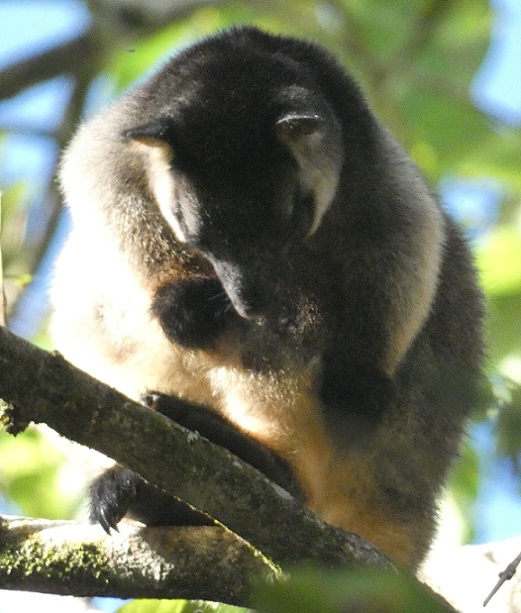
A Lumholtz's tree kangaroo grooming itself, or tending to a joey, high in the canopy at the Nerada Tea Plantation
This was a first-time sighting for our companions, so everyone was very excited. We could easily see that the dark face and paws, enlarged forearms, and long dark tail were quite different from the padamelons that we had seen earlier.
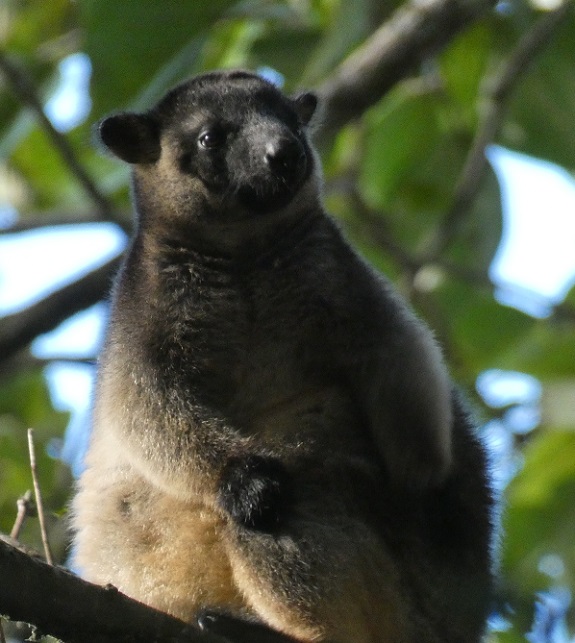
Deep in thought? The Lumholtz's tree kangaroo pauses from grooming
Randall was also pleased to observe that the tree kangaroo was moving its hind legs independently. According to Randall's source, the helpful cashier in the Malanda bottle shop (liquor shop), tree kangaroos are the only species of kangaroos to do so. An online search suggests that other kangaroos can do this only if lying on their side or swimming. Watching our Lumholtz's tree kangaroo climb, we could clearly see it moving one foot ahead of the other. This was a very satisfactory conclusion to our search for these charming creatures.
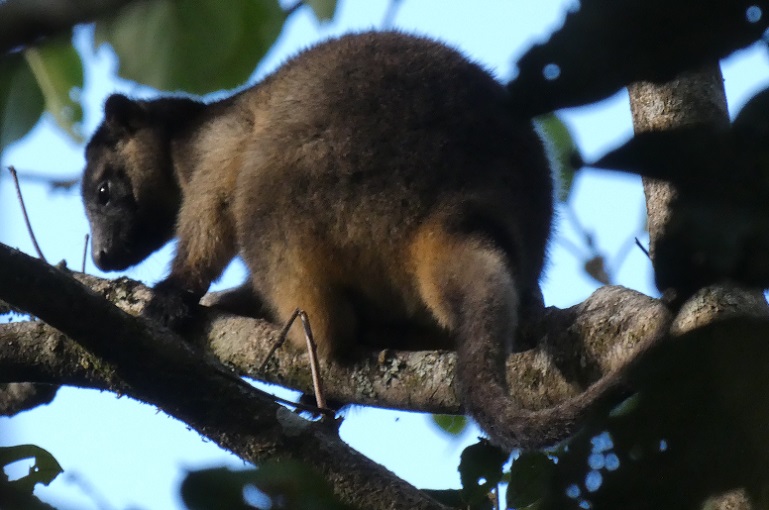
The Lumholtz tree kangaroo at Nerada climbing and using its hind legs independently
It had been a long busy day, so we returned to the Malanda Manor glad for a chance to wash and rest before dinner. We intended to eat at the nearby Malanda RSL Club (Returned and Services League - like the American Legion Bars) which had a good reputation. But, continuing our poor luck with dining establishments, we found that it closed on Tuesdays! Instead, at Chloe's suggestion, we went to the Carrington Hotel in Atherton. With its large dining room, sports on large TVs, and ordering at the counter, was just like an RSL Club. What it lacked in atmosphere, it made up for in volume of reasonably tasty food. Anyway, what did we care? During just two days we had seen a cassowary, padamelons, platypus, tree kangaroo, huge strangler fig, and several dramatic waterfalls. Thoroughly satisfied with our plan to come inland, we were feeling pretty pleased with ourselves.
The only question remained, how could we hope to maintain this pace of spectacle for the next two days?
Our quandary was solved for us once we had established that we would be going inland with our Australian friends from SVs Mischief and Symphony II. Long, slow birding walks might not be their highest priority, but the possibility of seeing cassowaries and tree kangaroos for the first time seemed to generate quite a buzz of excitement. Combined with the likelihood that recent heavy rains might have swollen local waterfalls to wet-season (summer) proportions, I soon found myself planning an itinerary that would revisit some sites from last year where we has seen unusual wildlife, and several places, particularly waterfalls, that we had missed. Once Lynne had booked us three rooms for three nights at a place near Malanda and we had reserved two cars, it felt as though we had very worthwhile trip outlined.
We moved Tregoning into the expensive Marlin Marina on Sunday (15th August) where I had the pleasure of completing five weeks' worth of laundry...woohoo! The following morning, we walked to the car rental office to be there at their 8 am opening time. This was fortunate because it took almost an hour to get both cars, by which time quite a queue of other, increasingly disgruntled, renters was forming. Bags packed for Lynne, Andrew, Randall, and me in one car, and Sue, Graeme, and Jamie in the other, we managed to leave the marina a little before our expected departure time of 10 am.
Our plans had the flexibility of heading south or north depending upon the weather conditions. The northerly option, on the ocean-side Cook Highway, would be best in sunny conditions and, although it was fairly bright as we left, the weather radar indicated that bands of rain clouds were on their way. So, hoping that conditions would be better for returning via the Cook Highway on Thursday, we headed south towards Babinda.
Our timing was going to be perfect. We could visit and bathe at the famous Babinda Boulders and then enjoy lunch at the highly regarded Babinda Bakery. Sadly, we had the right time, but the wrong day. As we drove through the small town on our way to the Babinda Boulders Scenic Reserve, we noticed a large sign at the Bakery noting that they were closed on Mondays. Such cruelty!
Fortunately, we still had time to recover with an alternative lunch plan after we had visited the Boulders. Located on the edge of Wooroonooran National Park, the Babinda Boulders Scenic Reserve is actually run by Cairns Regional Council and, even with the gathering clouds, it was quite a popular destination. Nobly volunteering to "take one for the team", I changed into my swimsuit, thinking that a quick dip in one of the deep pools worn into the granite substrate, as shown on the website's photos, would be fun. But first, we all followed the path through the dripping rainforest to the main viewpoint at Devil's Pool.

From the viewpoint at Devil's Pool, a corner of Babinda Creek where the water has carved several deep holes in the smoothly worn granite
Babinda Creek was certainly flowing with some gusto, spilling into deep pools that had been carved in the granite, racing through narrow channels between large boulders, and crashing across several cascades. There were many signs warning of the dangers of the Creek and banning entry to the water between the car park and Devil's Pool. Under these conditions, the reasons for such caution were obvious but the Aboriginal legend of how this area became so dangerous emphasizes that not everyone is cautious enough.
From Wikipedia:
"The tale is about Oolana, a young woman from the Yindinji Tribe. After being promised to a respected tribal elder, she met a handsome young warrior called Dyga from another tribe and fell in love. They fled their tribes and escaped into the wilderness to continue their affair. Elders searched for them and they were captured. Dyga was dragged away. Oolana escaped and was in despair. She threw herself into the Devil's Pools and her anguished cries turned into the pools' torrents.
Locals believe that Oolana's spirits still haunts the Devils Pools, pulling young men to their untimely deaths."
Once we had been impressed with the Devil's Pool, we returned towards the car park then continued upstream to the designated swimming area which is supposed to be very popular on hot days. Instead of the attractive deep pool of slow water that I had expected, the designated site was an area of shallow sand and much slower flow. On an overcast day with rain starting to fall, the greenish water did not look at all appealing, so I waded in to knee-depth and left it at that.
The heavy rain deterred us from going straight to Josephine Falls as we had intended, so we continued to Innisfail, planning to have lunch at the Cassowary Café, which Lynne had identified as looking very suitable for us. I am sure that it once was, but unless the directions on Google were completely wrong, that Café had not been in existence for a while. We finally ate a filling Thai meal at the Riverfront Café, and I started to wonder if anything on this trip was going to unfold as we had expected.
Innisfail is not very far north of Etty Bay Beach, where Randall and I had seen a cassowary last year. Randall had warned me against suggesting a trip there as it seemed unlikely that we would be so lucky again. Despite our words of caution, however, the rest of the group were still keen to try every opportunity to see a cassowary. Sure enough, there was no sight of one on the beach or around the campground. To add to our sense of frustration, someone told us that we must have just missed seeing one on the road, and Lynne and Sue found fresh footprints on the beach. The only redeeming aspect of this wasted detour seemed to be that the rain had stopped, so we started to make our way back to the main road and Josephine Falls.
After rounding a corner and slowing to cross a narrow bridge, the cry went up, "Cassowary!" And there on the other side of the road, walking daintily towards us, was a cassowary. Luckily, there was room to pull the cars over on the grass and everyone spilled out with cameras and phones at the ready. These Etty Bay cassowaries must be so used to tourists. This one continued walking, apparently quite undaunted by our sudden arrival, crossed the bridge and then turned to enter a pasture and head up the hill. By this time, another car coming in the other direction had joined our mob of paparazzi...and then the cassowary was gone. Thanking our good fortune for having been at the right place on the road at exactly the right time, I decided that perhaps not every one of the plans for our trip was doomed after all.

The roadside cassowary near Etty Bay (to 2m tall - this is Lynne's photo which was better than ours)
Thus encouraged and excitedly comparing our cassowary photographs, we returned through Innisfail to Josephine Falls in Wooroonooran National Park. It rained throughout our visit to the Falls, but after our good cassowary fortunes, our spirits were not dampened as we followed the trail to the Falls with our raincoats and umbrellas.

Our group admiring the triple tiers of Josephine Falls in the rain
Josephine Creek flows off Bartle Frere, Queensland's highest peak at 1,622 m (5,322 feet). Sadly, this peak was hidden from us all day in low clouds. As at Babinda Boulders, it was possible to swim in Josephine Creek in low-flow conditions. There were also many warnings about the dangers of leaving the trail and approaching too close to the Creek when water levels are high.

Warning signs at Josephine Falls explaining what the water-level indicators (left) mean
Only the top, red parts of the markers in the water were showing, which indicated that the water was at the "No Entry" level. If that was not clear enough, there were red lights flashing at every point at which a person might leave the path to enter the water. These lights indicated that no one should be on the creek edge, except on the designated pathway and viewing platforms. Our group did not need all of these warning to realize that the massive amount of water roaring over the multiple tiers of the cascades could rapidly increase during the rain, and would be completely overpowering to anyone swept into it.
We soon realized that such common sense is not evident to everyone as we watched a foolish young man pass the flashing lights and scramble his way onto a large boulder next to the rushing water. Apparently this idiot did not realize that he was supposed to be lured by Oolana's spirits into the Devil's Pool at Babinda Boulders, not into Josephine Falls. Most of us were relieved to see that he managed to return to the path without incident, but we all knew that one slip, a banged head, and he's gone...

Ignoring the red warning lights, an idiot clambered out to stand on a boulder just below the main cascades of Josephine Falls
During our walk through the rainforest on the path to the Falls, we had to brush past some branches of a recently fallen tree. When we returned to our cars, several of us found that we had land leeches attached to our feet or ankles. Apparently this was not a new experience for any of us, but we had somewhat differing reactions to it. Randall and I calmly pulled off the offending creatures (about 2 cm or 1 inch long) and put sticking plasters over the tiny but profusely bleeding wounds.
Lynne and Sue provided a much more visceral expression of their disgust. This involved a certain amount of shrieking, wild flapping of hands, and instructions to their partners, growled through gritted teeth, to remove the #?@*ers. There seemed to be some confusion as to the best way to do this, with salt on the tail being a popular idea...if only we had some salt. This is an effective way to dry and kill isolated leeches but, if applied when they are still attached, apparently risks having them vomit into the wound, which is probably not helpful. Randall tried to be encouraging by pointing out that removing a little flesh with the leech was not a problem, but I think that this was somewhat confusing this situation with the removal of ticks, where you do not want to leave any mouthparts in the wound. Eventually, the leeches were all simply picked-off and thrown away, wounds were dressed, and nerves were calmed. I know that my laughter throughout this performance did not help the situation, but I had never seen Lynne lose her cool before!
Predictably, we had no view on the drive up the Palmerston Highway due to low clouds and rain. After a brief stop to buy breakfast items at the small supermarket in Millaa Millaa, we continued to the Malanda Manor Guesthouse on the Millaa Millaa-Malanda Road. Damp and rather exhausted by the leech incident, we were all ready to relax, and the place that Lynne had chosen was perfect. We had the three large rooms on the top floor, each with a bathroom and kitchenette. And when we had walked in, a fire was roaring in the fireplace of the comfortable lounge.

Malanda Manor Guesthouse overlooking attractive pastureland
Our host Lee was very friendly and helpful, and with his daughters, Chloe and Emily, they were all very patient and understanding of Jamie, with his sharp focus on their washing and dishwashing machines and fire alarm system. We only met our hostess very briefly, but she was an excellent cook and made us very glad that we had chosen to eat at the Manor that evening. There were two other guests that night, Nicola and Jess, who joined us for music and songs by the fire. When he borrowed Randall or Graeme's guitars, it did not take us long to work out that Jess had once been in a rock-and-roll band!
By the following morning, we were relieved to see that most of the clouds had dispersed. Randall and I went for an early stroll along some of the roads near the guesthouse. We completed a bird survey which included a forest kingfisher and a Macleay's honeyeater, the latter being a species that we had not seen since our stay in Jullaten last year.

The varied shades of blue of a forest kingfisher (to 22 cm or 9 inches) seen near Malanda Manor
Having breakfasted in our rooms, we piled into the cars and drove north for all of 6 km (4 miles) to Malanda Falls. This delicate cascade did not seem very exciting after Josephine Falls and the Babinda Boulders and no one was in the mood to swim in the large pool.

Malanda Falls
However, everyone seemed to find something of interest at the informative and well-hosted Visitor Center. Having recently come from Cairns, we had to wear masks inside the Center because it was still within 11 days of the end of the snap 3-day lockdown in the city. Amazingly, no cases were ever linked to the infected taxi-driver, so the residents of Cairns were extremely lucky. On leaving the Visitor Center, on our way to look for tree kangaroos along the Rainforest Walk, Graeme, Andrew, and Randall were surprisingly inspired to pose for pictures. Despite embarrassed pleading, Sue, Lynne, Jamie, and I, did not feel the need to "take our turn".

L to R: Graeme, Andrew, and Randall posing as tree kangaroos
We lingered for quite a while on the 1 km loop trail, particularly looking for the Lumholtz's tree kangaroos. There are at least 13 species of tree kangaroo but most of them occur in New Guinea. The only other species in Australia is the Bennett's tree kangaroo, which is about twice the size of the Lumholtz's, and which is limited to a small area of the Daintree Rainforest south of Cooktown.
At the Turtle Viewing Platform, we were enchanted to see at least 20 saw-shelled turtles of various sizes resting on a partly submerged log or swimming in the murky water. Everyone was suitably surprised to learn that these turtles can breathe by exchanging water through their cloaca in a gill-like manner. Although they still have to surface occasionally to refill their lungs, this "breathing through their bottom" allows them to stay submerged for much longer than most other turtles.

Some of the many saw-shelled turtles seen in the North Johnstone River from the Turtle Viewing Platform
To the delight of Randall and me, we not only heard, but also saw, black-eared catbirds and several eastern whipbirds. The others were familiar with the call of the latter species but had never seen one, and they had never heard of catbirds before. Even more excitement followed the sighting of a small jumparoo on the ground in a patch of sunlight. We were soon snapping photographs and appreciating our good fortune at seeing a tree kangaroo so easily. Gradually, however, we all agreed that it was spending too much time on the ground to be a Lumholtz's tree kangaroo, and lacked the characteristic enlarged forearms, dark face, and dark paws.
By the time we finished the loop trail we had seen several of these jumparoos contentedly warming themselves in sunlit areas of the forest. Asking at the Visitor Center, we learned that they were red-legged padamelons. Randall and I have seen many padamelons (the next size of jumparoo down from wallabies) in Tasmania, but our Australian companions had never even heard of them, much less knowingly seen them before, so that made our sightings extremely satisfactory.

A red-legged pademelon (to 58 cm or 23 inches tall) warming itself in a patch of sunlight near the Rainforest Walk
Finishing our search for tree kangaroos around midday, we decided to stop at one of the volcanic lakes near Yungaburra to eat our picnic lunches. Since we had visited Lake Eacham last year, I suggested that we stop at Lake Barrine where we found more than a dozen great crested grebes in the middle of the lake. I had originally intended that we would have lunch or tea at the Lake Barrine Teahouse which receives excellent reviews, but I was disappointed to find that during this pandemic-influenced season, it was only open on Thursday through Sunday.
The only water input to both crater lakes is rainfall and Barrine only has any outflow during the wet season. Randall and I were a little surprised to see a sign informing us that the lake has an infestation of spotted tilapia fish. Native to West and Central Africa, this species is considered a noxious pest in Australia due to its ability to rapidly outcompete native fish and dominate aquatic communities. We were even more surprised to see several of these distinctive fish, each with a row of large spots along the side, despite repeated efforts to remove them by spearfishing. The round lake is only 1.2 km in diameter (0.8 mile) but with a depth of 65 m (213 feet), there is a huge volume of water in which the fish can lurk.
A short walk took us to the bases of two giant bull kauri trees (Agathis microstachya) both over 45 m tall (148 feet). Bull kauris are the largest of Australia's 38 conifer species and are restricted to a small area with high rainfall in the Atherton Tablelands, between 600 and 1,000 m elevation (2,000 to 3,280 feet). These specimens were thought to be about 1,000 years old, and ancient kauri species shared the planet with the dinosaurs.

The tall pink-tinged trunks of the bull kauri trees at Lake Barrine
Continuing the tree theme, we drove east along the Gillies Highway until turning off to find the Cathedral Fig Tree. This huge strangler fig with a 72 m (236 feet) girth is probably about 500 years old. The canopy is estimated to be over 2,000 sq m (the size of two Olympic swimming pools) and the leaves alone might weigh 1,000 kg (2,200 lbs or the weight of a small car).

Randall and Sue admire the Cathedral Fig Tree with many clumps of ferns seen in the canopy
The term "strangler fig" applies to at least a dozen species of fig that share the strangling growth habit that helps them become established in dense forests. This particular tree is a green fig (Ficus virens) and is certainly an impressive size with an amazing density of roots. To be honest, though, I thought that the Curtain Fig Tree that we saw last year on the other side of Yungaburra was a bit more unusual and interesting.

The dense monument of roots of the Cathedral Fig Tree
Returning to Yungaburra, we stopped at the Platypus Viewing Area where the Gillies Highway crosses Peterson Creek. Although all of us had seen a wild platypus before, their rarity and shyness made us all keen to see one again. Some of our group thought that they briefly saw a platypus below the viewing platform but what I though was one turned out to be the back end of a turtle. Most of us then walked up the Peterson Creek Trail while Graeme and Randall drove the cars to park near the Lloyds Suspension Bridge and walked back to meet us. Much to Sue's excitement, we did find a small platypus in the muddy water of one of the creek's bends. She managed to capture one good photograph but this creature was very shy, so it dived again almost immediately after it surfaced and saw one of us. I did not really get a good look but was happy that I saw one last year when we had visited much later in the day. While some of us wished that we could stay for longer to watch quietly, I thought that this little platypus would rather that we moved on. As it was, we did not have a choice because we had a date at the Nerada Tea Plantation.

Sue taking a picture of the shy platypus that I didn't quite see in the Peterson Creek
Since our Australian companions were nearly all tea-drinkers, and Jamie was always keen for a milkshake, we had made a reservation to have a Devonshire cream tea with scones, jam, and cream (not, sadly, the clotted cream as found in Cornish Cream Teas) at the tea plantation at 3:30 pm. After placing our order, we looked for tree kangaroos in the trees outside the Visitor Center but to no avail. Slightly disappointed, we tucked into our scones reminding ourselves that we had been very lucky with our sightings of the cassowary, padamelons, and platypus. Before we left, we took one more look...and YES, eagle-eyed Andrew found one high in a tree.

A Lumholtz's tree kangaroo grooming itself, or tending to a joey, high in the canopy at the Nerada Tea Plantation
This was a first-time sighting for our companions, so everyone was very excited. We could easily see that the dark face and paws, enlarged forearms, and long dark tail were quite different from the padamelons that we had seen earlier.

Deep in thought? The Lumholtz's tree kangaroo pauses from grooming
Randall was also pleased to observe that the tree kangaroo was moving its hind legs independently. According to Randall's source, the helpful cashier in the Malanda bottle shop (liquor shop), tree kangaroos are the only species of kangaroos to do so. An online search suggests that other kangaroos can do this only if lying on their side or swimming. Watching our Lumholtz's tree kangaroo climb, we could clearly see it moving one foot ahead of the other. This was a very satisfactory conclusion to our search for these charming creatures.

The Lumholtz tree kangaroo at Nerada climbing and using its hind legs independently
It had been a long busy day, so we returned to the Malanda Manor glad for a chance to wash and rest before dinner. We intended to eat at the nearby Malanda RSL Club (Returned and Services League - like the American Legion Bars) which had a good reputation. But, continuing our poor luck with dining establishments, we found that it closed on Tuesdays! Instead, at Chloe's suggestion, we went to the Carrington Hotel in Atherton. With its large dining room, sports on large TVs, and ordering at the counter, was just like an RSL Club. What it lacked in atmosphere, it made up for in volume of reasonably tasty food. Anyway, what did we care? During just two days we had seen a cassowary, padamelons, platypus, tree kangaroo, huge strangler fig, and several dramatic waterfalls. Thoroughly satisfied with our plan to come inland, we were feeling pretty pleased with ourselves.
The only question remained, how could we hope to maintain this pace of spectacle for the next two days?
Comments
| Vessel Name: | Tregoning |
| Vessel Make/Model: | Morgan Classic 41 |
| Hailing Port: | Gainesville, FL |
| Crew: | Alison and Randall |
| About: | We cast-off from Fernandina Beach in north Florida on 1st June 2008 and we have been cruising on Tregoning ever since. Before buying Tregoning, both of us had been sailing on smaller boats for many years and had worked around boats and water throughout our careers. |
| Extra: | “Tregoning” (rhymes with “belonging”) and is a Cornish word (meaning “homestead of Cohnan” or “farm by the ash trees”) and was Alison's mother’s middle name. Cornwall is in southwest England and is where Alison grew-up. |
Tregoning's Photos - Main
 |
Extra photographs from our three-week campervan tour of the South Island from November 15th to December 5th 2015
217 Photos
Created 4 January 2016
|
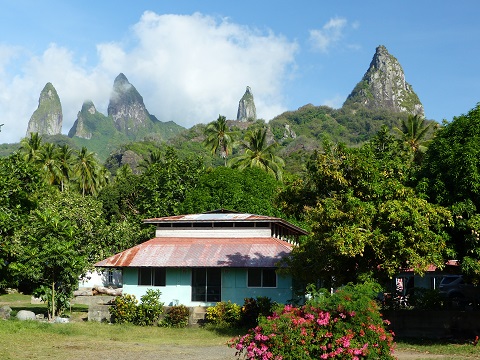 |
Random pictures from our month spent on the islands of Hiva Oa, Tahuata, Ua Pou, and Nuku Hiva
45 Photos
Created 18 July 2015
|
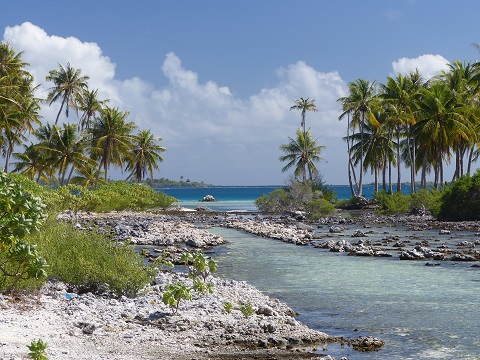 |
Random pictures from our month spent in 4 Tuamotu Atolls; Ahe, Fakarava, Tahanea, and Toau
32 Photos
Created 1 July 2015
|
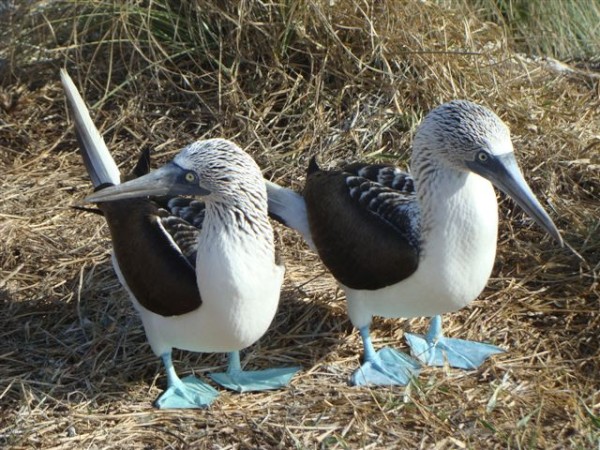 |
Some of the birds, fish, reptiles, and mammals (and others) that we have seen in Mexico
74 Photos
Created 5 May 2014
|
Tregoning

Who: Alison and Randall
Port: Gainesville, FL
